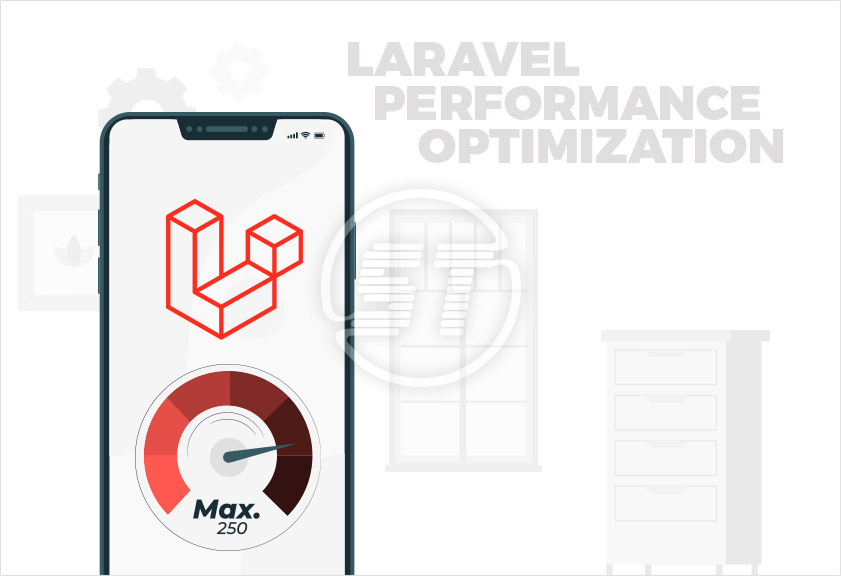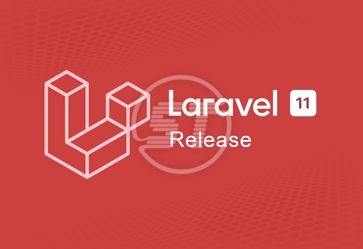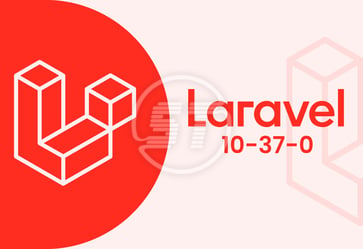Is your Laravel app driving you crazy with its lousy performance? Do you know the reasons for this problem?
Often, Laravel apps don’t give trouble. But it is a technology, which can demand some or other improvements at times.
Laravel app development is, without a doubt, the most preferred choice for creating business apps across the industries. It is the one-stop solution for single web applications and complex APIs development. Its MVC (Model View Controller) architecture and set of libraries allow developers to create impressive well-structured syntax and the list is ceaseless. But still, there is a small window for Laravel application performance optimization.
Do you think the same?
If we all are on the same page, then we must explore optimization tips to improve the Laravel app performance.
Significance of Laravel app performance optimization
You have created the Laravel-based app with a fine-tooth comb, yet the app shows some performance issues. What will be your reaction?
Ask yourself, what was your motive behind building an app using Laravel?
You wish to have a business app with flawless performance and since Laravel has shown remarkable results in previous years, it proves to be the best PHP framework. A few months ago, the LTS version of Laravel 9 has been released. Hence, it is implied that if your Laravel app has any performance issue, then undoubtedly it is going to influence the business unfavorably. Thus, to emulate the competition pace, it is not affordable to have any kind of performance issue in the app.
Moreover, Laravel app performance includes the speed of the app as well, and speed directly impacts the conversions phase. Therefore, it is advisable to focus on performance optimization to resolve the issues that are harming the business.
Proven tips for Laravel performance optimization
If your Laravel application is running slow due to unnecessary database queries and other problems, it needs to be optimized. Follow the tips given below.
Use Eager Loading
Laravel has ORM for dealing with databases, which is known as Eloquent. The Eloquent helps in generating models that deal with all database CRUD operations in PHP. When Eloquent starts using eager loading, it recovers all correlated models in response to the initial query and adds them to the response of the application. Database eager loading fetches all the required data at the same time.
Remember, there is a difference between lazy loading and eager loading and that is, eager loading executes faster and fetched data with relationship records in a single query, whereas lazy loading requires N+1 queries.
Add Middleware
Laravel middleware performs as a mediator between user and request. Whenever a user sends a request, it passes through middleware. Once you decide on all the packages you wish to add to the application, then you need to attach middleware details in the Kernel.php file to optimize the app. Use below-mentioned codes under $middlewareGroups.
protected $middlewareGroups = ['web' => [\RenatoMarinho\LaravelPageSpeed\Middleware\InlineCss::class,\RenatoMarinho\LaravelPageSpeed\Middleware\ElideAttributes::class,\RenatoMarinho\LaravelPageSpeed\Middleware\InsertDNSPrefetch::class,\RenatoMarinho\LaravelPageSpeed\Middleware\RemoveComments::class,\RenatoMarinho\LaravelPageSpeed\Middleware\TrimUrls::class,\RenatoMarinho\LaravelPageSpeed\Middleware\RemoveQuotes::class,\RenatoMarinho\LaravelPageSpeed\Middleware\CollapseWhitespace::class,]]Then define route to check the optimized Laravel app’s performance
Route::get('/listView', function () {return view('listView');});Use Artisan Commands
Laravel offers an amazing command-line tool for Laravel developers known as Artisan. It helps in enhancing the application’s performance, given you use it appropriately. Once you accumulate the routes and config, then execute the below command to cache config and routes
php artisan config:cachephp artisan route:cacheAfter applying these, all the routes will be cached into routes.php.file. Thus, whenever you need routes, the cache will be accessed and not the routes file. This process increases the Laravel application’s performance at a fanatic pace.
Moreover, it's not that once you have cached the routes then it is done. You need to add the routes again to the cache. If you don’t re-cache, you will not be able to add new routes. This can be done easily by clearing the cache using the command ‘artisan route:clear’ and then executing the command: ‘php artisan route:cache’. It will add new routes to the cache.
Similarly, to refresh and clear config,
php artisan config:clearTo further optimize the Laravel application, you should use OPcache, which caches the PHP code, and you don’t need to recompile it.
Optimize the composer autoload
It is one of the profound ways to improve Laravel app performance. First Scan the application using composer, then connect classes & files on a one-on-one basis. Use the following command to perform this task:
Composer dumpautoload – 0Cut down on unwanted plugins
Plugins increase the functionalities of the Laravel application, but they can be a reason for the slow performance of the app as well. Cutting down on the unnecessary plugins will reduce the load on composer.json files and decrease the dependencies that are loading.
JIT (just-in-time) Compiler
This is another way for Laravel application performance optimization, translate PHP code into bytecode and then execute it. JIT compiler converts bytecode to the instruction that goes directly to the processor. And then it starts running as soon as your program starts and compiles the source code on the fly, which enhances the performance of the Laravel app.
Asset optimization
Asset optimization is critical to improving the Laravel app performance. Ensure that there is a process to compile and minify all the front-end asset files. There are many bundler systems available, such as Parcel, Webpack, Gulp, etc., which will do this process for you, or else you can try Laravel Mix.
The Laravel Mix is a wrapper around Webpack that manages all the asset files. Use the below command
const mix = require('laravel-mix');mix.js('resources/js/app.js', 'public/js').sass('resources/sass/app.scss', 'public/css')And all the imports, optimization, and minification can be taken care of. The Laravel Mix not only handles CSS and JS files but Vue and React elements as well, which you may have used in your application.
Use Laravel Queues
Laravel queues can help differ the tasks that take enormous time to complete and can be done sometime later. The queue mechanism helps the application to lower the time consumed by some functions for later execution and increases the speed of the Laravel application execution time.
Try following code
public function register(Request $request){// validate form inputs$this->validator($request->all())->validate();// persist user to database$user = $this->create($request->all());// send welcome emaileMail::to($user)->send(new WelcomeEmail($user));// log user in$this->guard()->login($user);return $this->registered($request, $user)?:redirect($this->redirectPath());}This idea not only optimizes the app performance but also assists in executing the code swiftly and improving the UX.
Minify blade views
To boost the performance of the Laravel app, use HTML in the package to minify the blade views at the compile time. Generally, Laravel compiles many views but does not minify them, which is a noticeable barrier to app performance. Thus, minifying blade views is recommended.
Compress images
If your app has myriad heavy images, optimize them to improve its performance. There are tools that help you to compress the images for fast download. With Laravel Mix, you can use NPM packages like ImageMin to optimize the images and for large images, you have TinyPNG to compress the images.
Besides all the above-mentioned tips, keep an eye on the app’s security. Though Laravel has many in-built security features to safeguard the app, there is no harm in keep checking the loopholes to ensure the complete Laravel security of the app. Compromised security can also be a reason behind performance issues. So, follow the best Laravel security practices.
Wrapping up
Above are some of the tried and tested tips for Laravel application performance optimization, which will help you to resolve the performance issues to improve the app’s experience.
Laravel has set its performance benchmarks. That is why even a small issue trouble us like anything. Nevertheless, the optimization tips work well and improve the performance in no time.
If you have discovered the issues in the Laravel app, then performing optimization without a delay will prove to be a worthy move.
Are you using a Laravel application that is troubling you on its performance level? Not to worry, Skynet Technologies has an effective way out of it.
As a leading Laravel development company, we have an experienced and dedicated team of Laravel developers having years of expertise and technical know-how to handle simple to complex website security for varied industry domains in a defined timeline. Let us help you to add value to your business with our experienced Laravel web development services!
Get in touch with us at hello@skynettechnologies.com or submit the following request free quote form to know more.


